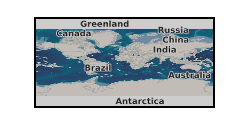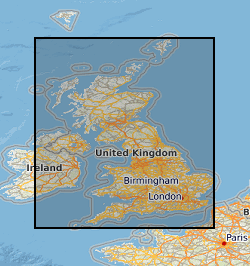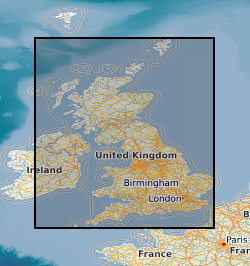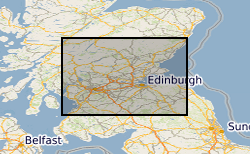1998
Type of resources
Available actions
Topics
Keywords
Contact for the resource
Provided by
Years
Formats
Representation types
Update frequencies
Scale
-

The SACS Best Practice Manual consists of two parts. The first part outlines the operational experiences gained during the Sleipner CO2 injection operation. The second part consists of recommendations based on the monitoring the Sleipner CO2 injection operation during the SACS project. The report can be downloaded from http://www.ieaghg.org/docs/General_Docs/Reports/SACS%20Best%20Practise%20Manual.pdf.
-

The full title of this project is" Studies into metal speciation and bioavailability to assist risk assessment and remediation of brownfield sites in urban areas" and is funded by NERC under the URGENT thematic programme form 1998-2001. The project is being undertaken by a consortium of workers from the Imperial College, University of Nottingham, and the British Geological Survey. Innovative collaborative and multi-disciplinary research will be applied to the interpretation of urban geochemical maps and associated meta-datasets to assist decision making by local authorities in the redevelopment of brownfield sites. Source apportionment, speciation and bioavailability of potentially toxic heavy metals will be studied at representative conurbations in the UK Midlands region. Scanning electron microscopy, chemical extractions and soil solution and vegetable analysis, will be integrated with high precision isotopic analyses of Pb and other potential toxic metals in this study. The results will be available as maps in GIS format to provide a generic decision support system for quantitative health risk assessment.
-

Many mineral resource maps for areas of Great Britain at scales of 1:25 000 and 1:50 000 have been produced by the British Geological Survey and its predecessors. Many of these maps were produced by the Industrial Minerals Assessment Unit (IMAU) from 1971 to 1986. Most maps cover a single 10 km x 10 km grid square, but some cover larger areas. The majority of maps are sand and gravel resource maps, but conglomerate, limestone, dolomite and celestite are also covered in certain regions. The maps show the locations of IMAU mineral resource blocks, the locations and categories of resource deposits and the locations of boreholes with indicative logs. A series of technical reports (Mineral Assessment Reports, MARs) was also created alongside the maps. Refer to the metadata entry for the Mineral Assessment Reports for more information. The maps are intended to be used for resource development, strategic planning, land-use planning, the indication of hazard in mined areas, environment assessment and as a teaching aid. The data was originally published in printed map form. The printed maps have been scanned and added to the BGS Maps Database.
-

The BGS collection of downhole CCTV (Closed Circuit Television) recordings and backup tapes for worldwide SKYLAB satellite imagery. CCTV recordings carried out down boreholes, mainly drilled for water, were undertaken by BGS for specific commercial contracts in Great Britain, and may also have associated geophysical data. The collection started in 1997, and the present holdings are 138 videos, with infrequent additions. Video recordings on other topics may be added.
-

Index, set up in 1998, to the archive collection of reports, notebooks interpretations, plans and other geological or related data received from external organisations that are not part of other collections. These cover a wide variety of different types and ages of information mainly from Great Britain but some related to BGS projects overseas.
-

Contains digitised mine plan contours, spot heights and worked ground outlines on key coal seams from the Midland Valley in ASCII or ArcView format. Incomplete, only some seams and some areas digitised. All contours digitised on key seams, worked ground outlines simplified, spot heights digitised where no contours exist.
-

The SACS and SACS2 projects ran sequentially from 1998 to 2002, with the aim of developing research into the potential for large-scale storage of CO2 in underground saline aquifer formations. SACS and SACS2, focussed specifically on scientific aspects of the Sleipner CO2 injection operation. As well as establishing protocols for conventional geological, geochemical and geophysical characterisation and monitoring, significant effort was put into evaluating requirements for the more holistic discipline of site risk assessment.
-

The joint PHE-BGS digital radon potential dataset provides the current definitive map of radon Affected Areas in England and Wales. It will also allow an estimate to be made of the probability that an individual property in England and Wales is at or above the Action Level for radon. This information also provides an answer to one of the standard legal enquiries on house purchase in England and Wales, known as CON29 standard Enquiry of Local Authority; 3.13 Radon Gas: Location of the Property in a Radon Affected Area. The radon potential dataset will also provide information on the level of protection required for new buildings under as described in the latest Building Research Establishment guidance on radon protective measures for new buildings (BR 211 2007). This radon potential hazard information for England and Wales is based on Public Health England (PHE) indoor radon measurements and BGS digital geology information. This product was derived from DigMap50 V3.14 and PHE in-house radon measurement data. The indoor radon data is used with the agreement of the PHE. Confidentiality of measurement locations is maintained through data management practices. Access to the data is restricted. This dataset has been superseded by PHE-BGS Joint Radon Potential Dataset For Great Britain. Radon is a natural radioactive gas, which enters buildings from the ground. Exposure to high concentrations increases the risk of lung cancer. The Health Protection Agency recommends that radon levels should be reduced in homes where the annual average is at or above 200 becquerels per cubic metre (200 Bq m-3). This is termed the Action Level. The Health Protection Agency defines radon Affected Areas as those with 1% chance or more of a house having a radon concentration at or above the Action Level of 200 Bq m-3. The dataset was originally developed by BGS with the Health Protection Agency (HPA) which is now part of Public Health England.
-
This CD-ROM is produced by the European Space Agency (ESA) and contains land surface temperature demonstration products as estimated from the Advanced Very High Resolution Radiometer (AVHRR) sensor onboard the National Oceanic and Atmospheric Administration (NOAA) series of polar orbiters. The data used are from the full resolution (1 km) composites (decade) data set processed in the framework of the "1 km AVHRR Global Land Data Set" collaborative project of the United States Geological Survey (USGS) EROS Data Centre (EDC), NOAA, NASA, ESA under the guidance of IGBP and CEOS. This CD-ROM contains excerpts from the full resolution land surface temperature (1 km pixel) data set over Europe, as well as so called world monthly "climatic values" (0.5 degree x 0.5 degree grid). The full processed data set runs from July 1992 to June 1993.
-
This dataset consists of results of chemical analyses of single water chemistry samples, taken from headwater streams during a survey in 1998. Water samples were analysed at the Centre for Ecology & Hydrology for chemical analysis of alkalinity (at pH 8.3) and soluble reactive phosphorus. Conductivity and pH were measured in the field using a regularly calibrated field meter. Data were collected under the Countryside Survey long term monitoring project managed by the Centre for Ecology & Hydrology. The Countryside Survey is a unique study or 'audit' of the natural resources of the UK's countryside. The sample sites are chosen from a stratified random sample, based on a 15 by 15 km grid of GB. Headwater stream surveys have been carried out in 1990, 1998 and 2007 with repeated visits to the majority of sites. The countryside is sampled and surveyed using rigorous scientific methods, allowing us to compare new results with those from previous surveys. In this way we can detect the gradual and subtle changes that occur in the UK's countryside over time. In addition to headwater stream data, soil data, habitat areas, vegetation species data and linear habitat data are also gathered by Countryside Survey. Full details about this dataset can be found at https://doi.org/10.5285/b8052165-c6c5-427e-a90c-c536ff46aec8
 NERC Data Catalogue Service
NERC Data Catalogue Service